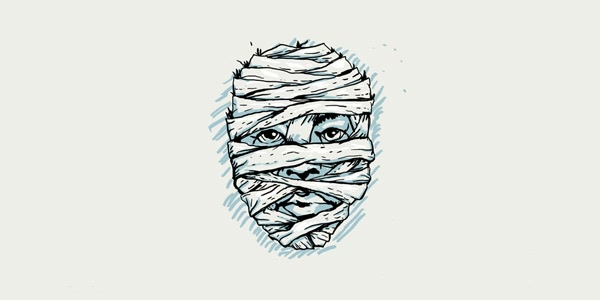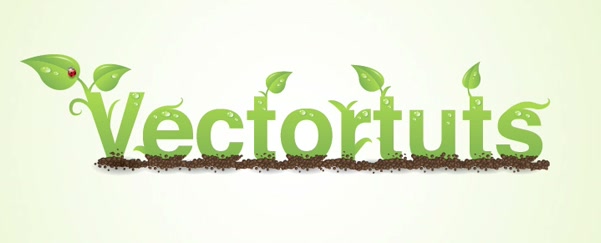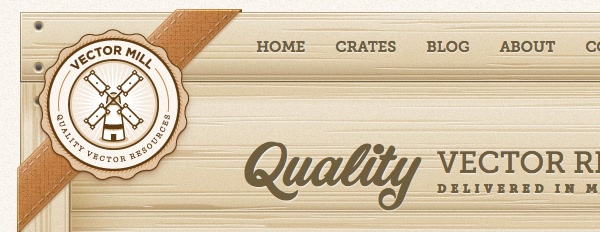One Minute With…
Ryan Putnam

Hi Ryan, thanks for taking time to chat with One Minute With. Tell us a little bit about yourself and your work.
Thanks for the chat! I’m a designer, illustrator and blogger. I run the design studio Rype Arts, the blog Vectips, and the online shop Vector Mill. I have always sketched, doodled, and created things. I dabbled in fine art in high school and received a BFA in Graphic Design from Colorado State University. After college I worked for a print shop and a small design studio before becoming a full-time freelance designer, illustrator, and blogger.
Walk us through a typical day in the life of Ryan Putnam.
To get the juices flowing, I start with some coffee. Once I hop on the computer, I read through a bunch of feeds and do my first round of communications consisting of mostly emails, Tweets, and Facebooking. After that, I have to turn off all distractions or else I couldn’t get anything done. I usually do the most intensive work in the morning. Usually this is client jobs, a long tutorial, or working on some stock illustrations. I do another round of communication before lunch, do lighter work in the afternoon, another round of communication at the end of the day and I’m done! I have some days set for specific tasks. For example, Fridays are bookkeeping and administration type of work.

How did you get into design?
It was just a natural progression from the art I was doing in high-school. I was always nervous about relying on the salary of a fine artist so I thought a career in graphic design would suffice financially. It wasn’t until I started taking design courses I realized how much I loved design and illustration. I have always valued the utilitarian side of art and design offers so much more than pure aesthetics. Design is a balance between usability and aesthetics. It’s fun and challenging.
How do you approach a new project? What’s your design process like?
It really depends on the project. For clients, I have a specific set of steps to take them through. For me, having specific steps make the process faster, easier, and less confusing. For a client, the specific steps usually makes the process less confusing, creates a sense of contribution, and they are usually happier with the end product. The process is a little different depending if it is a branding project, illustration, or web design, but they all start with a questionnaire. The other steps can include a round of sketches, round of mood boards, live examples, and other similar stuff.
Most of the personal work happens a little more organically. It usually starts with an idea or doodle. From there I just expand on the idea. I don’t really have any specific steps on how to take the idea from beginning to end. It just kind of happens. Now that I think about, maybe I should have more a process.

When you’re regularly writing tutorials, do you feel it is important to diversify your style as much as possible, to keep things fresh? How do you keep as much variety in your work as you have, to avoid getting stuck in a rut?
Yeah, I think it’s really important to alter my style. I started writing tutorials to help other people and to become more knowledgable myself. If I stick to one style I really wouldn’t be helping anyone. It’s also in my nature to try different styles and techniques. I really just get bored if I do the same thing over and over again. If I see a style I like I try to incorporate it in my work or try to recreate it for a tutorial.

You’ve been involved in a few high-profile self-initiated projects, such as VecTips and Vector Mill. How much of your work is self-iniated projects, and how much is client work? Is there one you prefer over the other, and why?
My time is probably split 50/50 between client work and the self-initiated projects. Both have their positives and negatives. Sometimes with client projects, you get to work with experiences, ideas, products and people you would never have otherwise. On the flip side, when working for a client, you are hostage to their taste, requirements, and schedules. But if you are a good designer, you can give your client a great product while keeping your integrity.
To be honest, I much prefer the personal projects. I love the freedom of taking an idea from the foundations to fulfillment. Even though I can be my own worst client, I hope in the future I can be financially sustained by personal projects alone.

With the previously mentioned projects of yours, VecTips and Vector Mill, you contribute an awful lot to the design community, in terms of resources, tutorials and articles. How important is it to be involved in the design community?
It’s pretty important to me to stay involved. The design community provides great education, feedback, and support. Even if I wasn’t doing Vectips and Vector Mill, I would participate in the community in some way. It’s awesome to connect with people that are just as excited about design and illustration as I am.
What design tools could you not live without?
I guess the most obvious one is my iMac with Illustrator, but it would be pretty hard to get by without the internet, my Moleskine, a pencil, and my Wacom Intuos4. The second tier of stuff would be Evernote, OmniFocus, Reeder, and Dribbble. I don’t want to sound too cheese, but I couldn’t do any of it without the support of my wife. I definitely wouldn’t be doing what I love without her.

And finally, what tips would you give to anybody who is looking to get started in design?
Never stop learning, have an open mind, get a thick skin, and always read and scrutinize anything you sign.